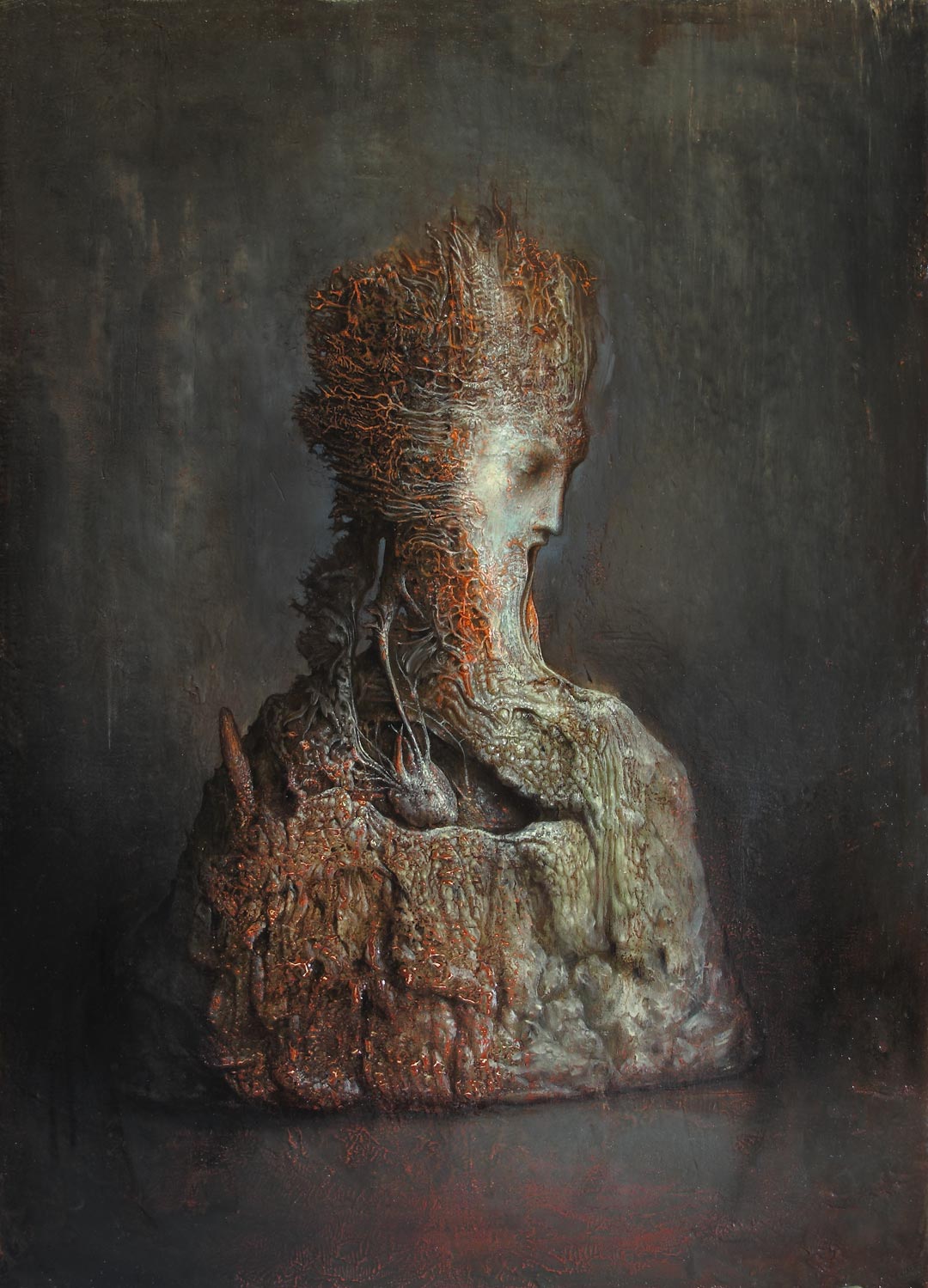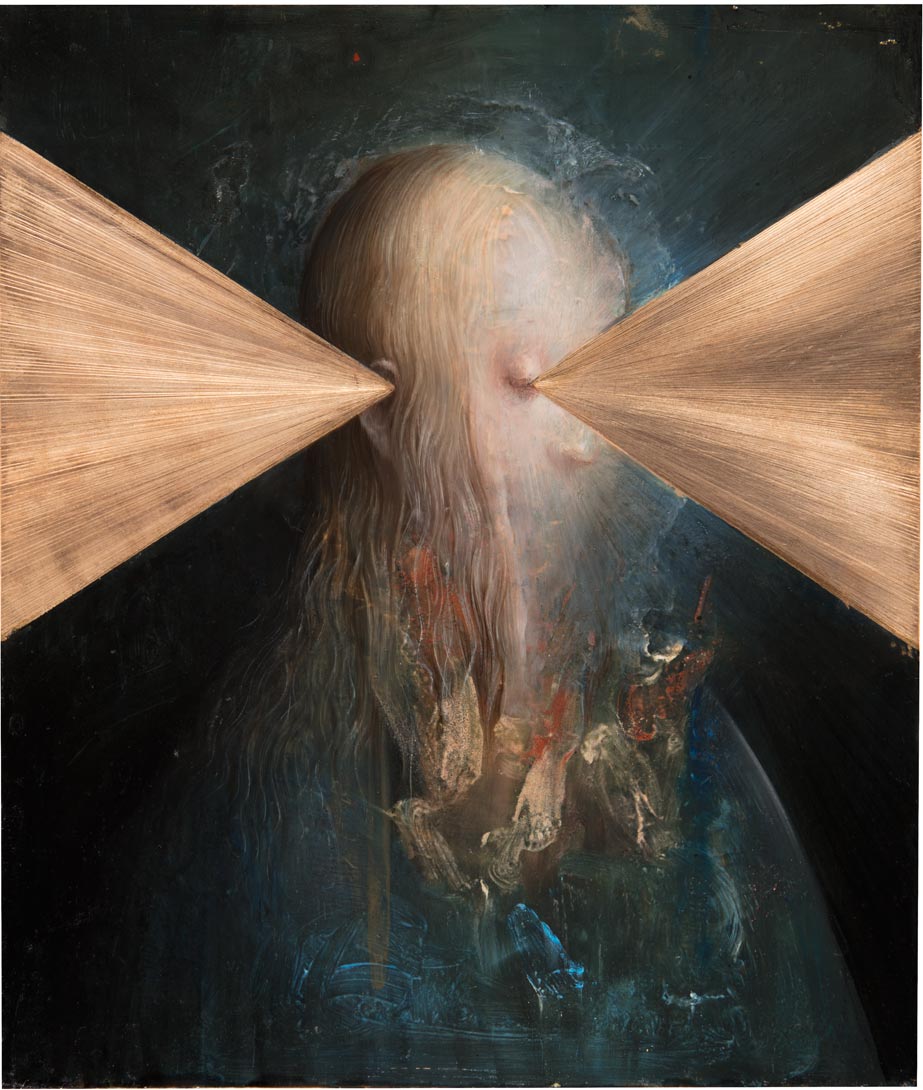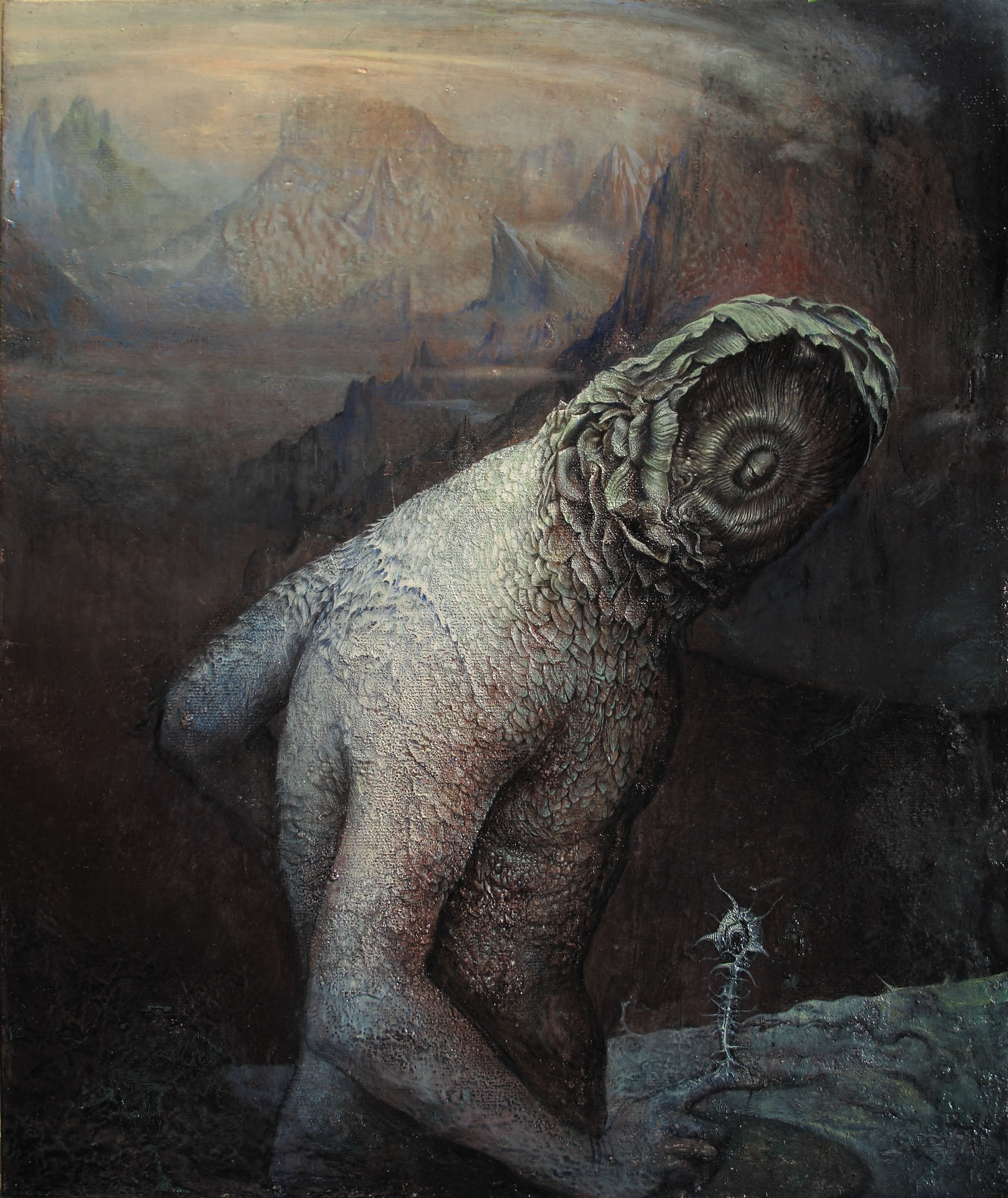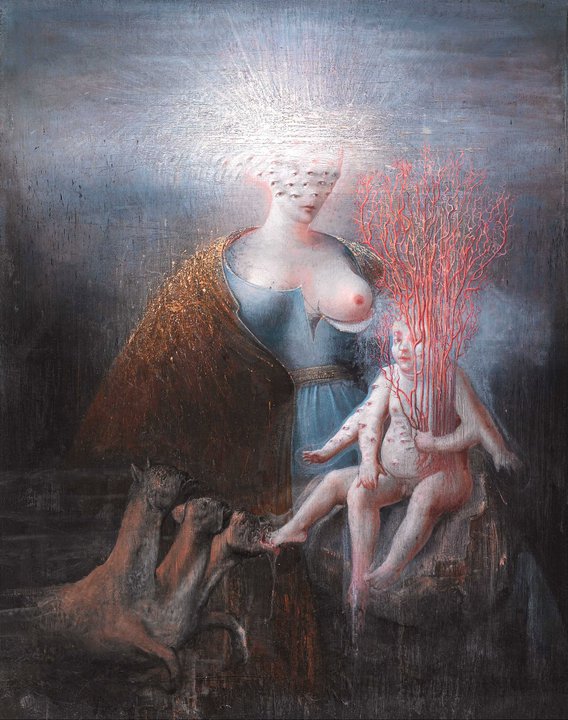b
Anastasis: The Transcendent Art of Agostino Arrivabene
The surreal, mystical, and exquisite artwork of Agostino Arrivabene never ceases to amaze me. In his lambent dreamlike style, the otherworldly and the unearthly are depicted with the painstaking detail and techniques of classical art. I believe he is one of the best artists working today – his paintings have an unsurpassable beauty, showing a masterly quality that is nothing short of virtuosic and inspired. He has also really perfected his art and vision over the past several years.
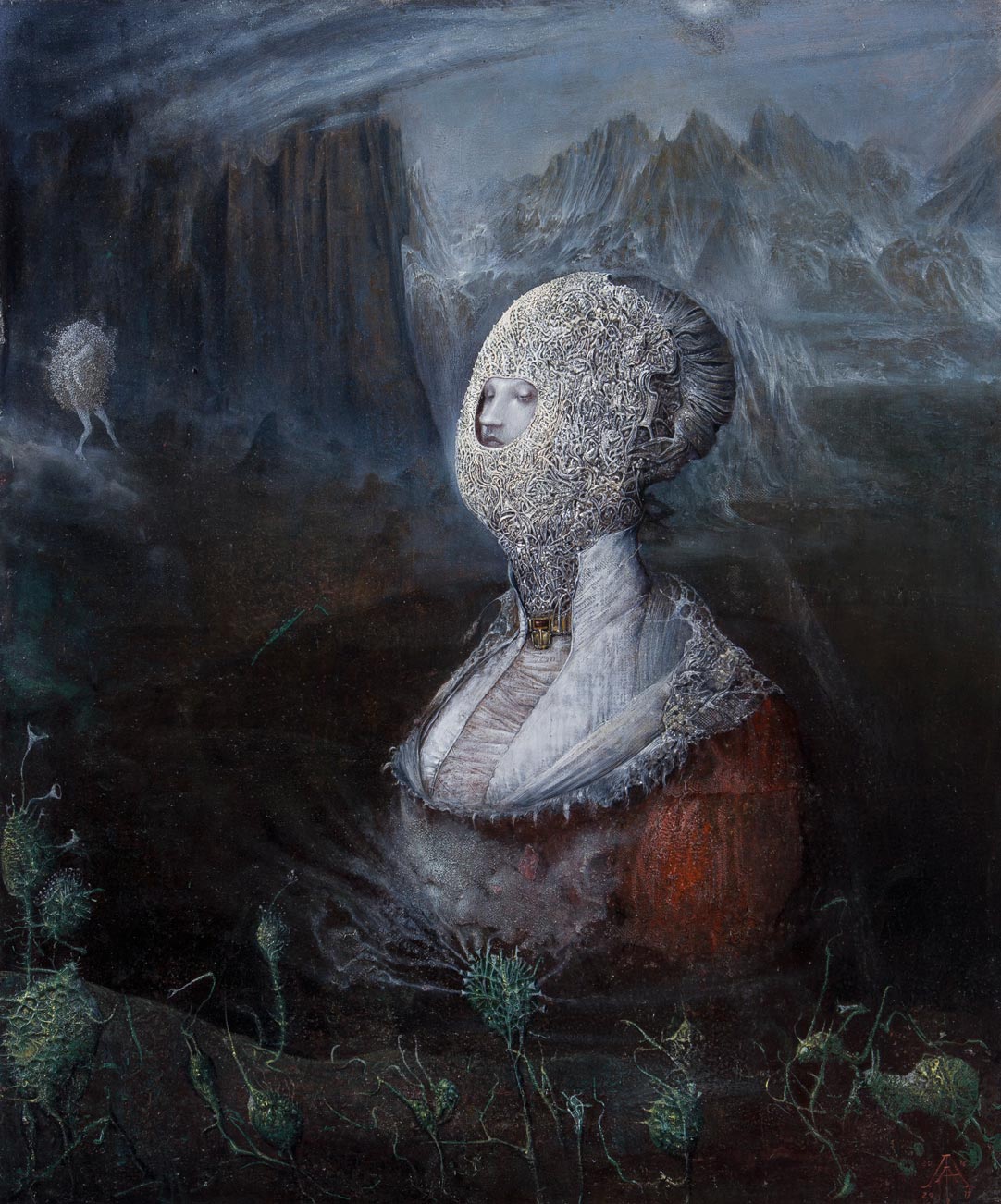
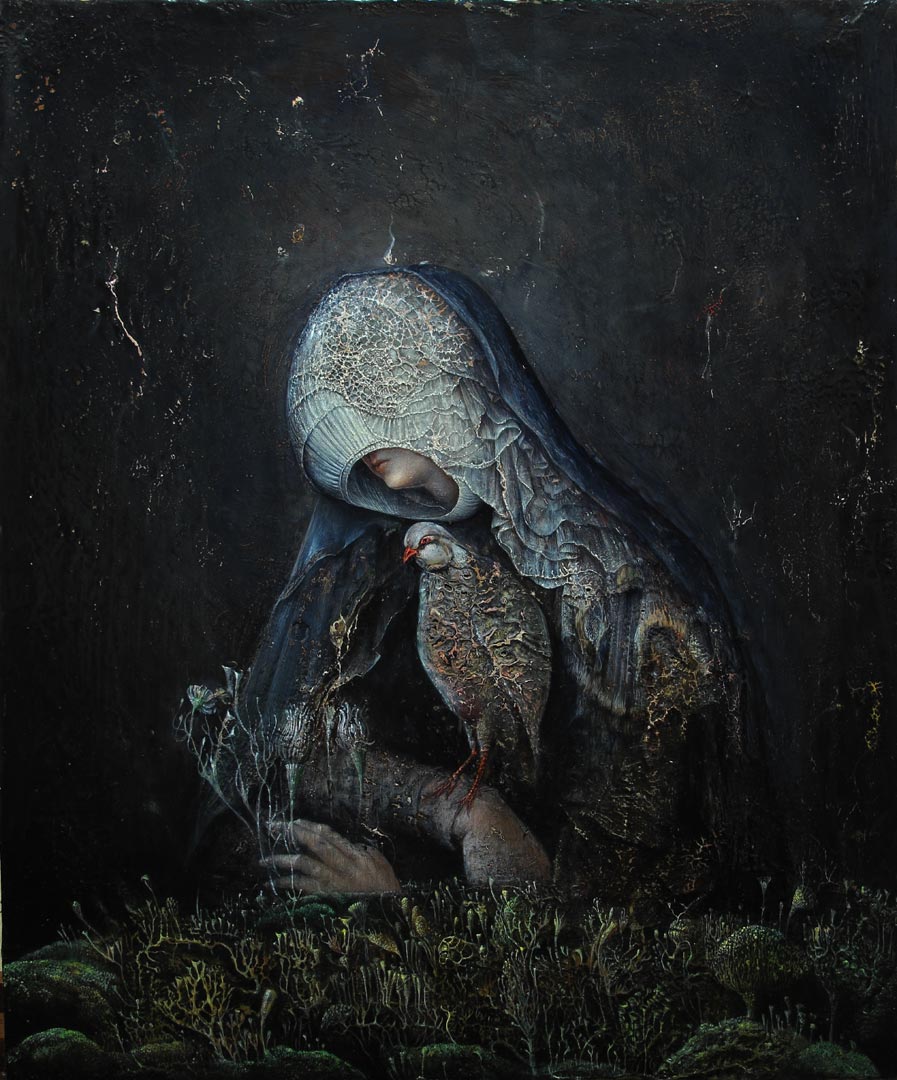
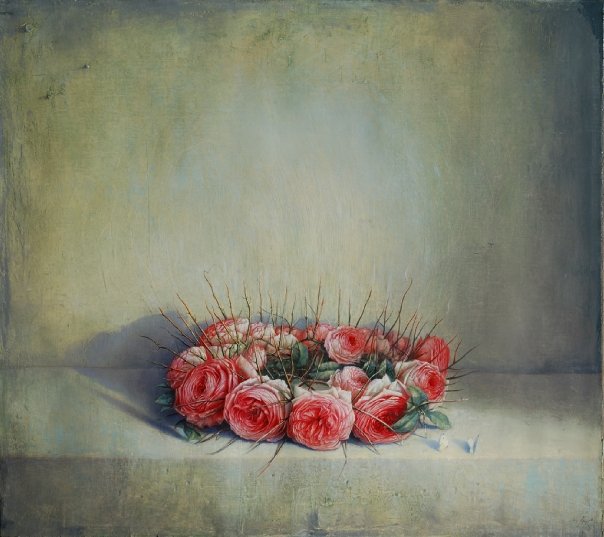
Arrivabene’s work evokes the Old Masters and Renaissance painting, hybridized with a modern style which transforms venerable images into uncanny things, combining religious iconography with a strange surrealism. His pieces have a numinous, glowing spiritual quality, focusing on the human form imbued with a sense of divinity. There are also landscapes which are colossal in scope and sublimity. These forms often have parasitic or symbiotic growths upon their limbs and faces – they are in the process of being overrun and eventually overtaken by this inhuman accretion. The Madonnas and Christs of his creation appear to be merging with iridescent and nacreous, strange alien flora, becoming a new form of bodily and spiritual life – a concomitant death and resurrection. It does not seem necessarily sinister, but is certainly dark, profound, and unfathomable.
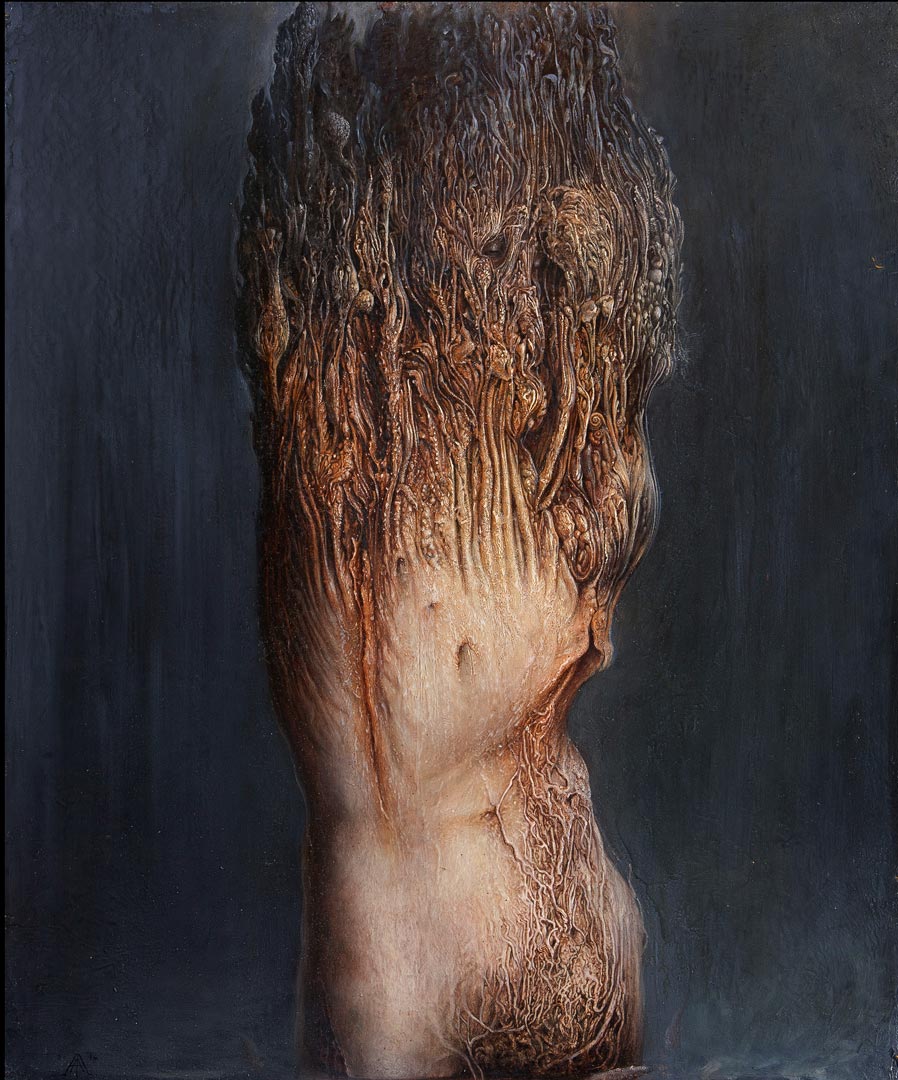
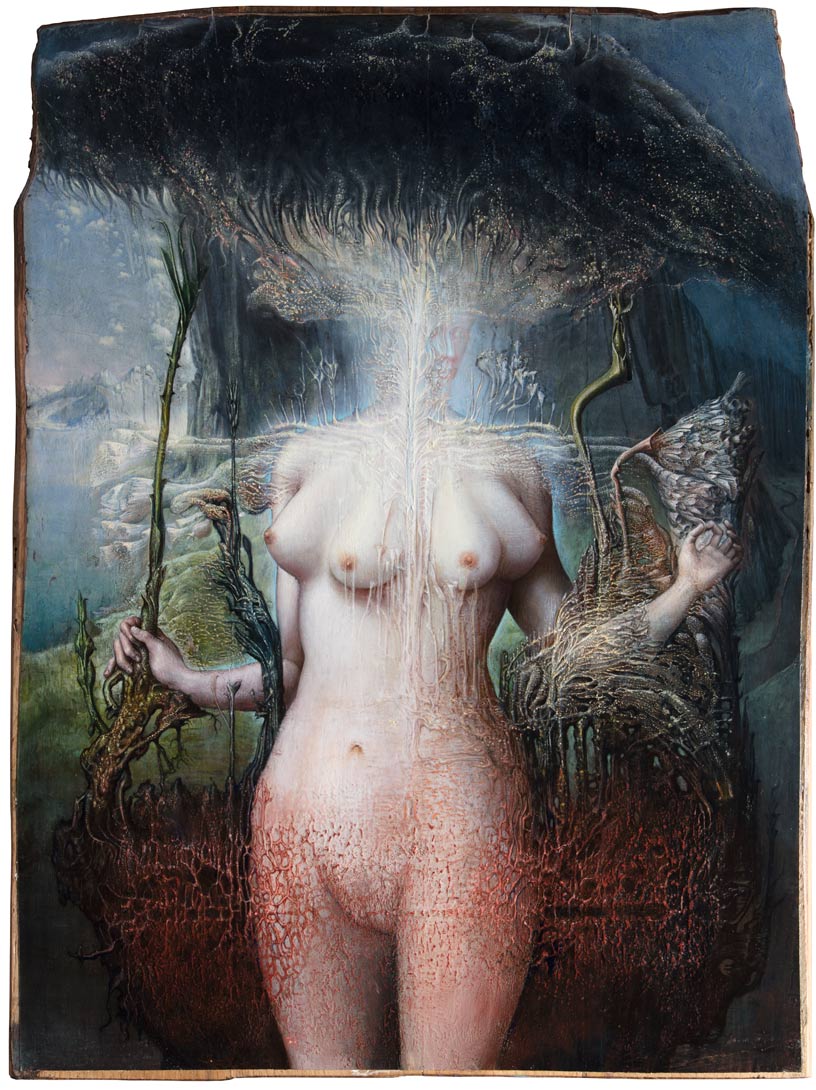
The decaying, rot-eaten textures of the paint also lend to the antique air of his works, as if these were artworks of a realm immeasurably distant in the future, being rescued from the obscurity of its ancient past. Arrivabene’s is an alien, primal religious world, which is constantly transformed by preternatural forces – organic matter with an ethereal dimension. The themes bring to mind the mythology and sense of indescribable mystery of Jeff VanderMeer’s Southern Reach novels (and the film adaptation of Annihilation). His visions are encrusted and endlessly elaborated with an organically baroque beauty, forms developed by a nature unknown to us, rather than by human artifice. I love the luminous colors, and the incredible detail – overall his oeuvre exudes a delicacy and subtlety which is truly otherworldly. It perhaps portrays the ecstatic agony of alien saints.
